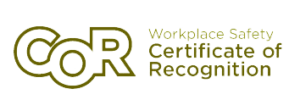In today’s world, the heartbeat of many businesses resides within the server room.
These rooms house critical hardware and IT infrastructure that keep everything running smoothly.
Maintaining the perfect temperature in a server room is crucial for protecting equipment and ensuring it operates properly.
Let’s take a look at how server room air conditioning works and what the cooling requirements are for optimal performance:
How Are Server Rooms Cooled?
Server rooms are typically cooled using specialized cooling systems designed specifically for this purpose.
These systems fall into two main categories: Computer Room Air Conditioners (CRAC) and Computer Room Air Handlers (CRAH).
Computer Room Air Conditioners (CRAC)
Server rooms use CRAC units, which pull heat from the air, cool it down, and then recirculate it into the space.
These units are equipped with precise temperature and humidity controls to ensure optimal conditions for server equipment.
Computer Room Air Handlers (CRAH)
Alternatively, some server rooms use CRAH units. These systems cool the air using chilled water or refrigerant coils, offering flexibility in temperature and humidity regulation. They’re particularly suitable for larger server rooms or data centers.
Modern Features
Today’s server room air conditioning systems also include modern features like variable-speed fans, hot aisle/cold aisle containment, and intelligent control systems.
These innovations enhance efficiency, reduce energy consumption, and maintain consistent cooling throughout the server room.
How Cold Should a Server Room Be?
Maintaining the right temperature in a server room is important when it comes to the performance and lifespan of IT equipment.
Generally, a temperature range between 64°F and 80°F (18°C to 27°C) is recommended. This range keeps the equipment cool enough to prevent overheating and avoids excessive cooling that could lead to condensation issues.
However, it’s important to note that the right temperature can vary depending on things like the type of equipment, the layout of the room, and environmental conditions.
Can a Server Room Be Too Cold?
While it’s important to maintain a cool environment in the server room, it is possible to overcool the space.
Here’s what can happen if a server room is too cold:
- Condensation may form on equipment, leading to corrosion and electrical shorts.
- Excessive cooling can strain HVAC systems, leading to increased energy consumption and potential system failure.
- Extremely low temperatures can cause discomfort for personnel working in the server room.
- Overcooling may result in inefficient use of resources and increased operational costs.
- Certain types of equipment may not function optimally at very low temperatures, impacting performance and
reliability.
This is why it’s important to strike a balance between cooling and humidity control.
How Much Cooling Is Needed for a Server Room?
The cooling requirements for a server room depend on various factors, including the size of the room, the type of equipment installed, and the level of heat generated by the equipment.
The Server Room
Figuring out the cooling requirements for a server room begins with looking at the physical space. The size of the room directly influences the amount of cooling needed to maintain a stable temperature.
The type of equipment in the server room, including servers, networking devices, and storage systems, also plays a significant role in determining cooling requirements.
Different types of equipment create different levels of heat, which has to be managed effectively to prevent overheating and potential damage.
Cooling Load
The cooling load of a server room includes the combined heat output of all the equipment within the space. Factors such as the wattage of the servers, the number of servers, and the efficiency of the room’s insulation and airflow contribute to the cooling load.
Servers with higher wattage ratings generate more heat, so they require more cooling capacity to maintain optimal operating conditions.
Proper insulation and airflow management help minimize heat buildup and distribute cooling effectively throughout the server room.
Temperature and Humidity
Maintaining proper temperature and humidity levels is important for the reliable operation of server room equipment.
Ambient temperature can directly affect the efficiency of the cooling systems and the overall temperature in the room. High humidity levels can lead to condensation, which poses a risk of equipment damage.
Monitoring and controlling both temperature and humidity levels are important aspects of meeting the cooling requirements for a server room.
How to Design the Perfect Server Room AC System
Designing an effective server room AC system involves conducting a thorough cooling analysis to assess the heat load, airflow patterns, and equipment layout.
It’s essential to choose cooling systems that can effectively remove heat and maintain stable temperature and humidity levels.
Cooling Analysis
Designing an effective server room air conditioning system starts with a comprehensive cooling analysis.
Professional HVAC technicians analyze factors such as the equipment, airflow patterns, and the layout of the equipment.
Understanding the specific requirements of the server room environment is key to designing the best cooling solution.
Effective Cooling Systems
Once a cooling analysis is done, HVAC specialists can then tailor cooling solutions that precisely address the unique requirements of the server room environment.
By choosing the right equipment and strategically placing units to optimize airflow patterns, an effective cooling system can mitigate hot spots and provide even cooling throughout the space.
Choosing the right cooling technologies ensures that critical IT infrastructure operates within optimal conditions.
Multiple AC Units
In situations where the server room is large or complex, multiple AC units can be used to provide enhanced cooling capacity and distribution throughout the space.
Figuring out how many units are required and how to configure them depends on different factors, such as the size and layout of the server room, redundancy requirements, and plans for future expansion.
Server Room Air Conditioning Solutions
Making sure your server stays cool is essential for the operation and lifespan of your IT equipment.
If you need help designing or installing a server room AC system, Advantage Refrigeration is here to help.
We can ensure that your business is equipped with a reliable and efficient server room air conditioning system tailored to your specific needs.























